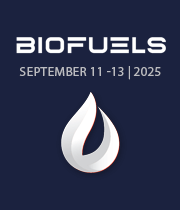Title : Environmental assessment of drop-in fuel production from municipal solid waste via gasification and Fischer-Tropsch synthesis
Abstract:
A major contributor to climate change is the use of fossil based liquid fuels in the transportation sector, while the management of municipal solid waste (MSW) also poses a significant challenge. This study analyses the environmental impacts associated with the production of drop-in fuels from MSW through the combined use of gasification and the Fischer-Tropsch (FT) synthesis. A cradle-to-gate life cycle assessment approach was used to compare 4 process configurations that integrate direct and indirect gasification combined with a solid oxide electrolyer (SOEC) and the water gas shift reaction (WGS) for H2/CO ratio correction with FT-synthesis. Two different tail gas utilization options were also analysed (recirculation within the system and combustion for energy generation) to identify the most environmentally friendly option. The functional unit of the study was 48.5 MJ of FT-duel produced, the impacts were quantified using the ReCiPe 2016 midpoint methodology and the LCA modelling was done on SimaPro 10.2.
Results show that combining direct gasification with an SOEC for H2/CO ratio correction leads to the lowest overall impacts, with a 23% lower global warming potential (GWP) as compared to the more conventional route of using the WGS reaction. The lower overall carbon conversion efficiency associated with the use of the WGS reaction is the primary cause for its worse environmental performance. The comparison of recirculation of tail gas to its combustion shows that at a recirculation ratio of 0.8, a GWP reduction of 42% can be achieved. Similar reductions can be seen in all other categories such as ozone depletion potential (ODP) and fossil resource scarcity (FRS) with 51% reductions seen in both. When the SOEC is fully powered by renewable energy and a recirculation ratio of 0.8 is applied to the system, GWP can be reduced by 56%.
These findings highlight the potential of SOEC integration in reducing the environmental impacts associated with the production of drop-in fuels from MSW.
Acknowledgment:
This abstract was supported by the projects UID 00481 Centre for Mechanical Technology and Automation (TEMA), 022.09319.PTDC, DOI 10.54499/2022.09319.PTDC, and COMPETE2030-FEDER-00770000. J.K. Ravindran thanks FCT for the Ph.D. scholarship 2023.02529.BD.



